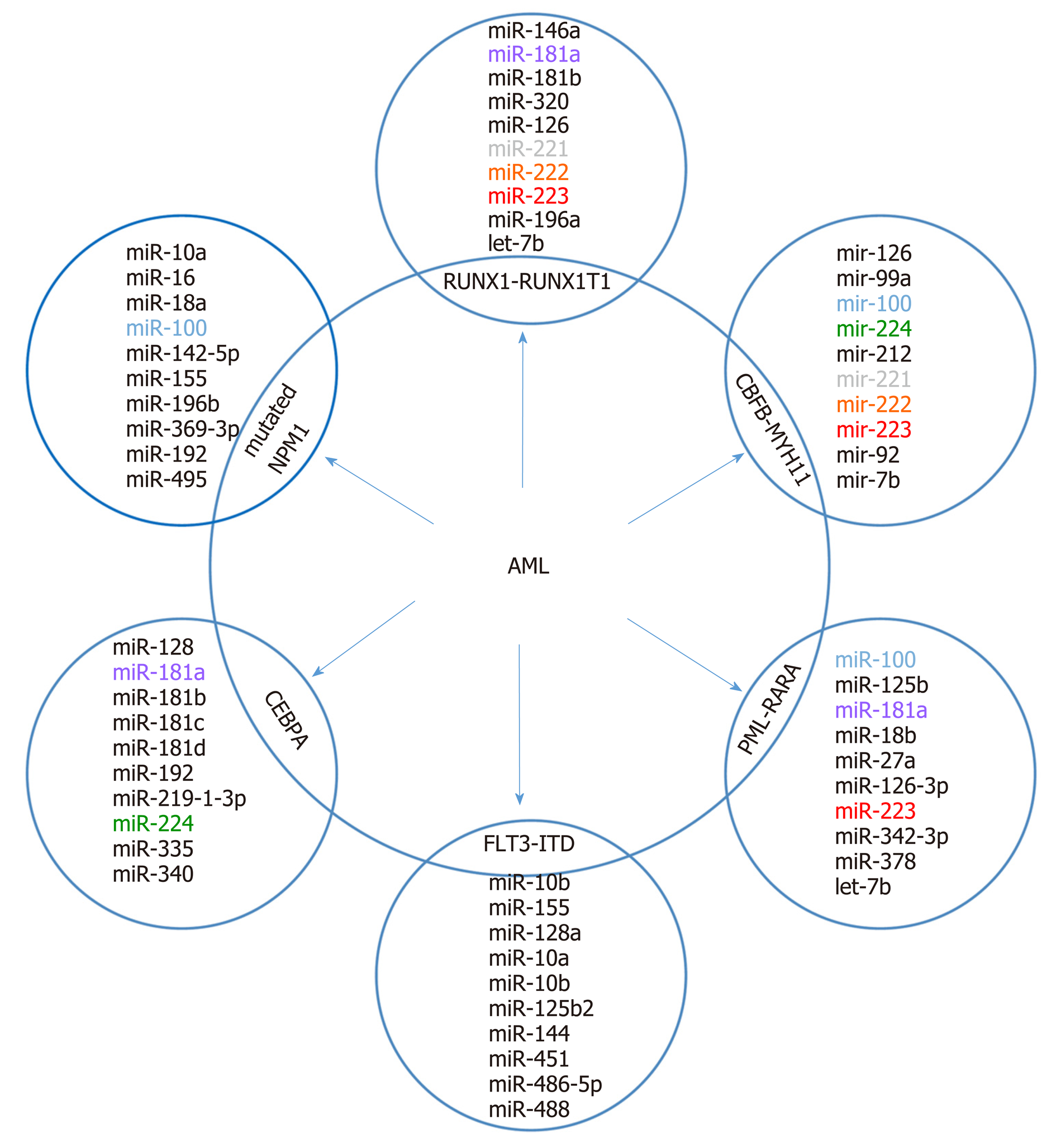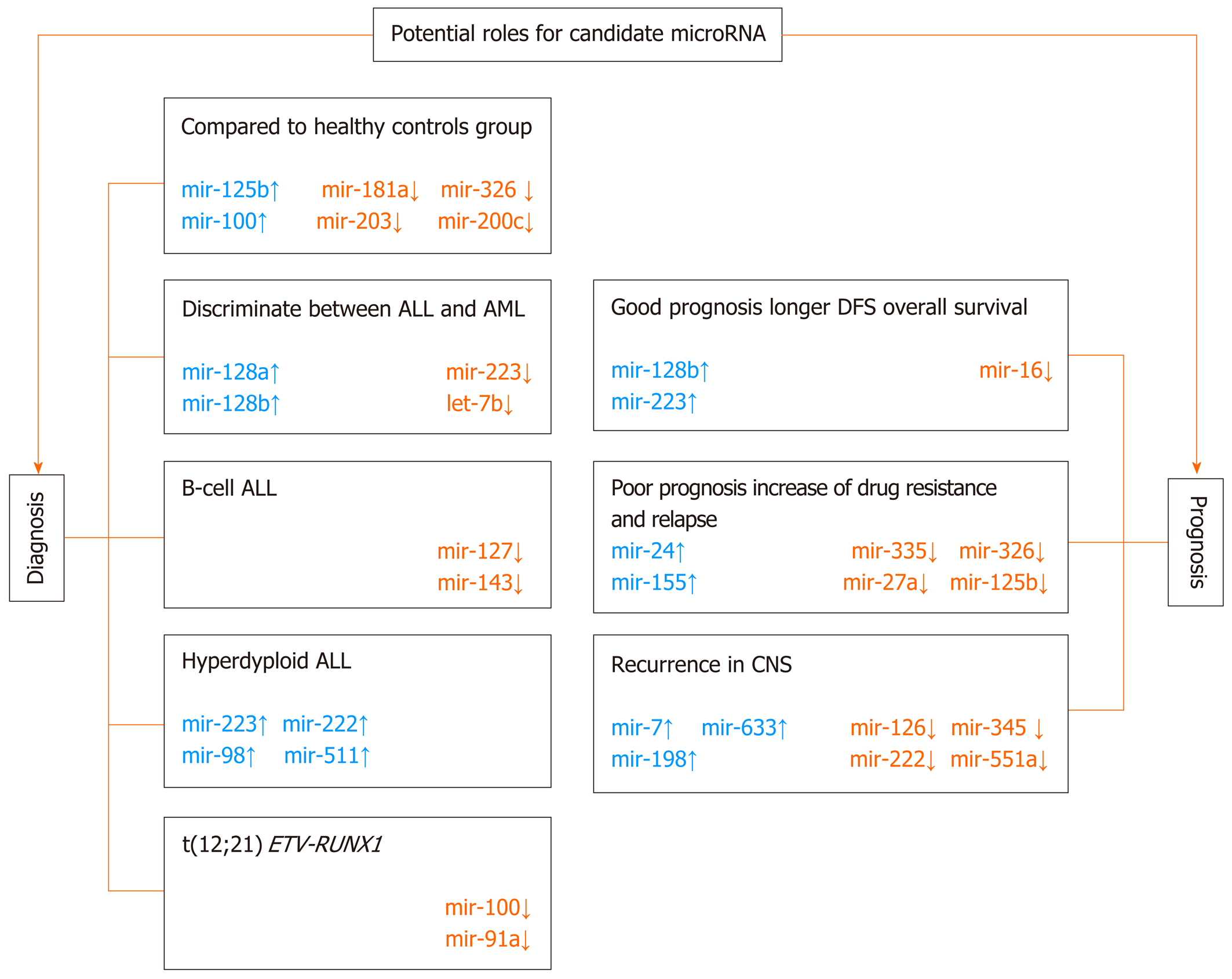Copyright
©The Author(s) 2020.
World J Clin Oncol. Jun 24, 2020; 11(6): 348-369
Published online Jun 24, 2020. doi: 10.5306/wjco.v11.i6.348
Published online Jun 24, 2020. doi: 10.5306/wjco.v11.i6.348
Figure 1 Examples of microRNAs that may exert contrasting oncogenic/tumor-suppressive effects on tumor-modifying extrinsic factors and the leukemic cells themselves (modified from Svoronos et al[19], with the permission of the author).
Green arrows, positive regulation; orange arrows, negative regulation; blue arrows, either positive or negative regulation. A narrow extension directly from a microRNA to the central leukemic cell refers to promotion/inhibition of leukemic cell progression/survival through the microRNA’s direct regulation of leukemic cell–endogenous mRNAs.
Figure 2 A top ten discriminative microRNA set for the main acute lymphoblastic leukemia subgroups.
The subtypes display a unique discriminating microRNA (except where overlap is shown) that distinguishes each subgroup from each other (modified from Grobbelaar et al[3], with the permission of the author). ALL: Acute lymphoblastic leukemia.
Figure 3 A top ten discriminative microRNA set for the main acute myeloid leukemia subgroups.
The subtypes display a unique discriminating microRNA (except where overlap is shown) that distinguishes each subgroup from each other (based on data from Trino et al[69]). AML: Acute myeloid leukemia.
Figure 4 Possible roles of microRNAs in the diagnosis and prognosis of childhood acute lymphoblastic leukemia (modified from Grobbelaar et al[3], with the permission of the author).
ALL: Acute lymphoblastic leukemia; AML: Acute myeloid leukemia.
Figure 5 Schematic strategy for the development of new therapeutic protocols to modulate the biological activity of microRNAs.
This approach involves several mechanisms of the downregulation of oncomiRNAs or the upregulation/mimicking of oncosuppressor microRNAs (modified from Gokani et al[153], with the permission of the author). miRNAs: microRNAs.
- Citation: Szczepanek J. Role of microRNA dysregulation in childhood acute leukemias: Diagnostics, monitoring and therapeutics: A comprehensive review. World J Clin Oncol 2020; 11(6): 348-369
- URL: https://www.wjgnet.com/2218-4333/full/v11/i6/348.htm
- DOI: https://dx.doi.org/10.5306/wjco.v11.i6.348













